Wampi, Wampee
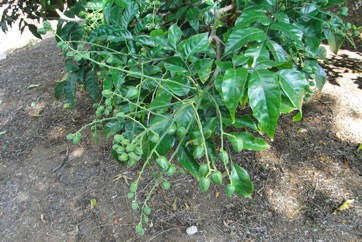
It is native to S. China. A subtropical fruit. It can withstand light frosts. They can grow in dry situations. It can grow on a range of well drained soils. It can grow in acid and alkaline soils. Iron chlorosis occurs on alkaline soils. In the Cairns Botanical Gardens. It suits hardiness zones 10-12. In Sichuan and Yunnan.
Also known as:
Huangpi, Lansio, Mafai-jean, Pohon wampi, Song fa dong, Wong Pay, Yellow skin
Synonyms
- Aulacia punctata Raeusch.
- Clausena punctata (Sonn.) Rehder & E. H. Wilson
- Clausena wampi (Blanco) Oliv.
- Cookia punctata Sonn.
- Cookia wampi Blanco
- Lansium silvestre M. Roem.
- ? Quinaria lansium Lour.
- Sonneratia punctata (Sonn.) J. F. Gmel.
Edible Portion
- Fruit, Leaves
Where does Wampi grow?
Found in: Asia, Australia, Brazil, Cambodia, China, Cook Islands, Cuba, Hawaii, India, Indochina, Indonesia, Laos, Malaysia, Myanmar, Pacific, Philippines, SE Asia, Singapore, South America, Sri Lanka, Thailand, United States, Vietnam
Notes: There are about 23-30 Clausena species.
Status: It is widely grown in southern China. It is a cultivated food plant.
Growing Wampi, Wampee
Cultivation: Plants can be grown from seed. Trees can easily be grown from softwood cuttings, air layering or grafting. As fruit occur near the tips of the branches pruning must only be done carefully.
Edible Uses: The fruit is eaten fresh or used in jellies. The skin and seeds are not eaten. The fruit can be preserved, dried, made into jams, pies or drinks. The leaves are used in curries. The juice is used for making a fermented champagne like drink.
Production: It is fast growing. Trees start to produce fruit after 3-6 years. It can grow in moderately cool and dry places. Plants fruit in about 6 years. A mature tree can yield 45-50 kg of fruit in a year.
Nutrition Info
per 100g edible portion| Edible Part | Energy (kcal) | Protein (g) | Iron (mg) | Vitamin A (ug) | Vitamin c (mg) | Zinc (mg) | % Water |
|---|---|---|---|---|---|---|---|
| Fruit | 34 | 1.4 | 0.4 | 0 | 24 | - | 88.2 |
Wampi, Wampee Photos

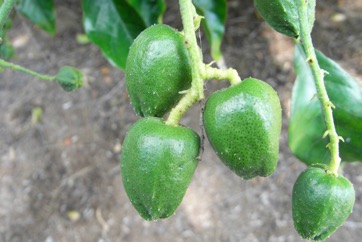
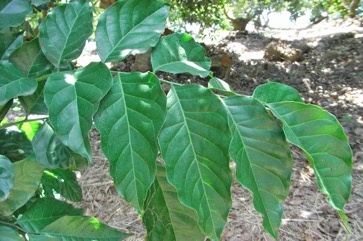
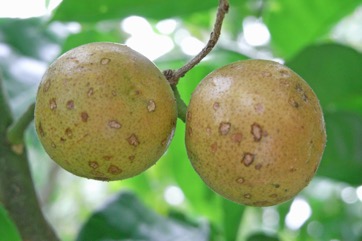
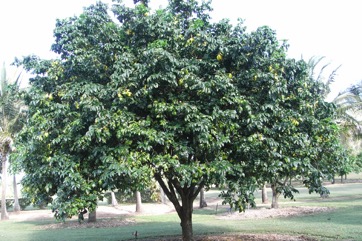
References
Ambasta, S.P. (Ed.), 2000, The Useful Plants of India. CSIR India. p 130
Arora, R. K., 2014, Diversity in Underutilized Plant Species - An Asia-Pacific Perspective. Bioversity International. p 64, p 102
Barwick, M., 2004, Tropical and Subtropical Trees. A Worldwide Encyclopedic Guide. Thames and Hudson p 119
Burkill, I.H., 1966, A Dictionary of the Economic Products of the Malay Peninsula. Ministry of Agriculture and Cooperatives, Kuala Lumpur, Malaysia. Vol 1 (A-H) p 585
Chandrashekara, U. M., 2009, Tree species yielding edible fruit in the coffee-based homegardens of Kerala, India: their diversity, uses and management. Food Sec. 1:361-370 (As Clausena wampi)
Coronel, R.E., 1982, Fruit Collections in the Philippines. IBPGR Newsletter p 6
Cull, B.W., 1995, Fruit Growing in Warm Climates. Reed. p 188
Darley, J.J., 1993, Know and Enjoy Tropical Fruit. P & S Publishers. p 122
Etherington, K., & Imwold, D., (Eds), 2001, Botanica's Trees & Shrubs. The illustrated A-Z of over 8500 trees and shrubs. Random House, Australia. p 215
Facciola, S., 1998, Cornucopia 2: a Source Book of Edible Plants. Kampong Publications, p 219
Food Composition Tables for use in East Asia FAO http://www.fao.org/infoods/directory No. 1010
Gouldstone, S., 1983, Growing your own Food-bearing Plants in Australia. Macmillan p 132
Hibbert, M., 2002, The Aussie Plant Finder 2002, Florilegium. p 68
Hu, Shiu-ying, 2005, Food Plants of China. The Chinese University Press. p 500
John, L., & Stevenson, V., 1979, The Complete Book of Fruit. Angus & Robertson p 277
Kiple, K.F. & Ornelas, K.C., (eds), 2000, The Cambridge World History of Food. CUP p 1876
Lorenzi, H., Bacher, L., Lacerda, M. & Sartori, S., 2006, Brazilian Fruits & Cultivated Exotics. Sao Paulo, Instituto Plantarum de Estuados da Flora Ltda. p 597
Lyle, S., 2006, Discovering fruit and nuts. Land Links. p 146
Macmillan, H.F. (Revised Barlow, H.S., et al) 1991, Tropical Planting and Gardening. Sixth edition. Malayan Nature Society. Kuala Lumpur. p 297
Martin, F. W., et al, 1987, Perennial Edible Fruits of the Tropics. USDA Handbook 642 p 74
Miguel, E., et al, 1989, A checklist of the cultivated plants of Cuba. Kulturpflanze 37. 1989, 211-357
Morton, J. F., 1987, Fruits of Warm Climates. Wipf & Stock Publishers p 197
PROSEA handbook Volume 9 Plants yielding non-seed carbohydrates. p 188
Purseglove, J.W., 1968, Tropical Crops Dicotyledons, Longmans. p 493
Recher, P, 2001, Fruit Spirit Botanical Gardens Plant Index. www.nrg.com.au/~recher/ seedlist.html p 1
Seidemann J., 2005, World Spice Plants. Economic Usage, Botany, Taxonomy. Springer. p 111
Staples, G.W. and Herbst, D.R., 2005, A tropical Garden Flora. Bishop Museum Press, Honolulu, Hawaii. p 509
Sukarya, D. G., (Ed.) 2013, 3,500 Plant Species of the Botanic Gardens of Indonesia. LIPI p 203
Tanaka,
Tankard, G., 1990, Tropical fruit. An Australian Guide to Growing and using exotic fruit. Viking p 116
Thitiprasert, W., et al, 2007, Country report on the State of Plant Genetic Resources for Food and Agriculture in Thailand (1997-2004). FAO p 95
TodaFruta.com.br
USDA, ARS, National Genetic Resources Program. Germplasm Resources Information Network - (GRIN). [Online Database] National Germplasm Resources Laboratory, Beltsville, Maryland. Available: www.ars-grin.gov/cgi-bin/npgs/html/econ.pl (10 April 2000)
U.S.D.A. Bur. Pl. Industr. Bull. 168:31. 1909
Valder, P., 1999, The Garden Plants of China. Florilegium. p 276
Van Sam, H. et al, 2008, Uses and Conservation of Plant Species in a National Park. A case study of Ben En, Vietnam. Economic Botany 62:574-593
http://cookislands.bishopmuseum.org
World Checklist of Useful Plant Species 2020. Royal Botanic Gardens, Kew